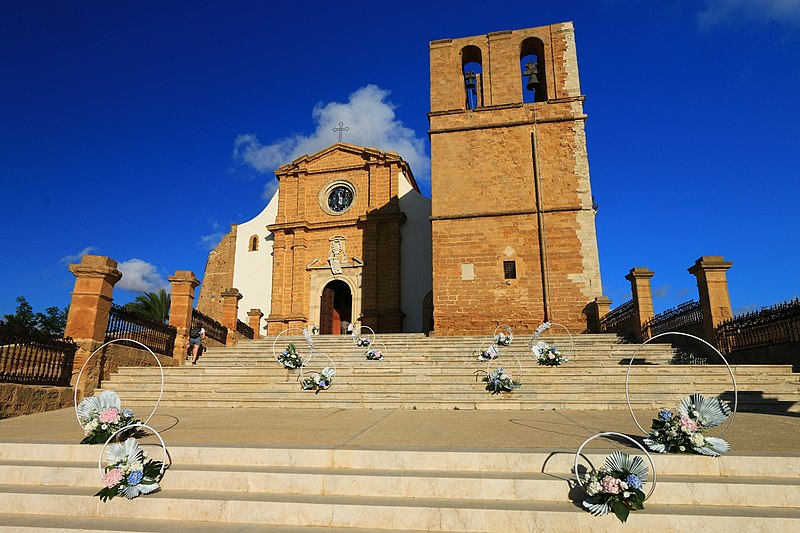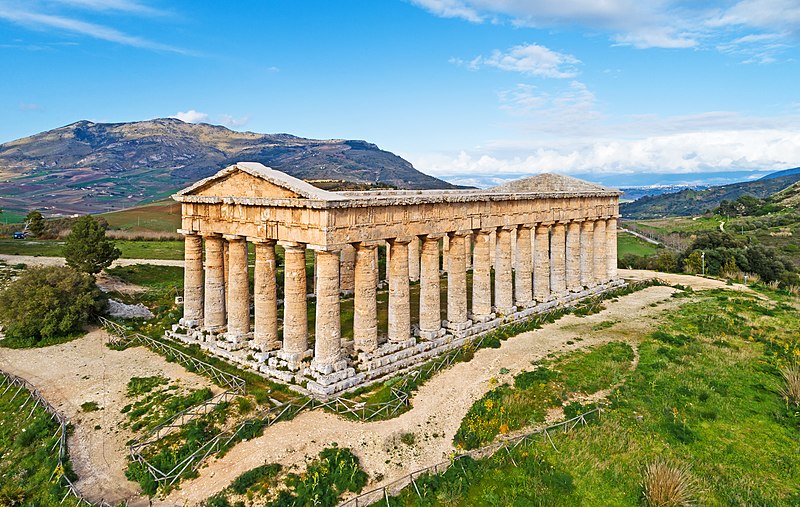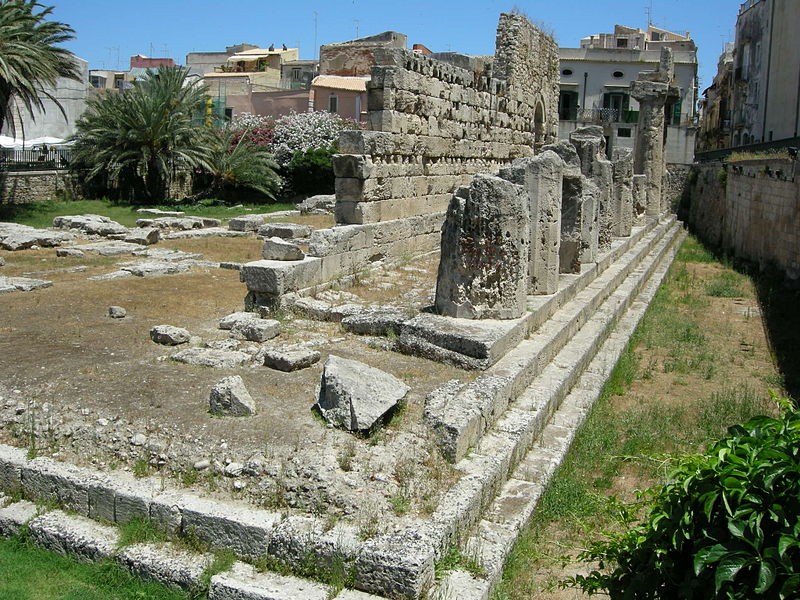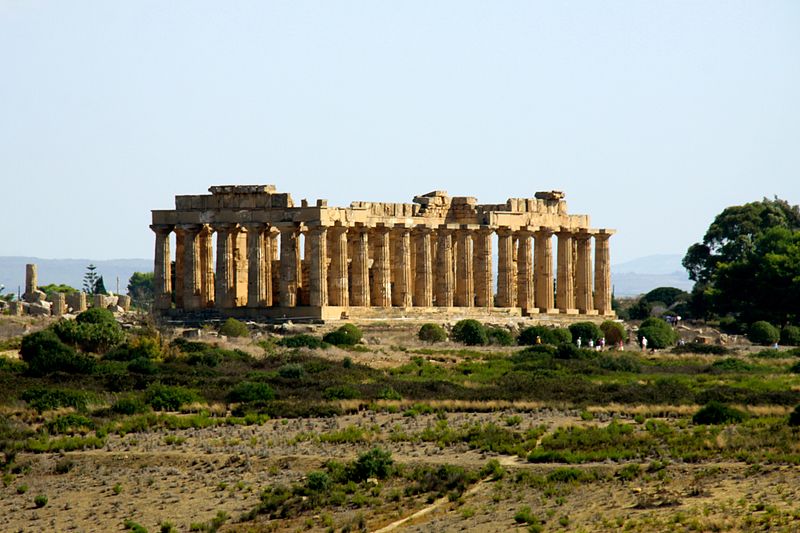Sicily has an incredibly profound and compelling history. The remnants of its Arab and Norman past continue to shine through the island’s cuisine and architecture, but the majestic temples from its time as a Greek colony are particularly intriguing.
Having been born and raised here, I’ve spent much of my life exploring all of the ancient sites dotted throughout the island. However, there’s something truly special for me about the crumbling Greek temples in Sicily that have been here for thousands of years.
No matter how often I wander along the Valley of the Temples or admire the vistas from the Theater of Taormina, I never tire of diving further into this era of Sicilian history.
With Sicily housing the highest concentration of these ruins outside of Greece, checking out all of them in one trip is no easy feat. To ensure you don’t miss out on the best ones, I’ve compiled my top picks to help you narrow down the spots you absolutely can’t miss!
Sicily’s Must-See Greek Temples
Valley of the Temples

Easily the most recognizable of all the Greek ruins in southern Italy, the Valley of the Temples is a complex of eight temples and dozens of other relics dating back to 510 BC. It’s one of the most expansive archeological sites in the world, with UNESCO World Heritage status since 1997.
A true testament to the ancient Greeks’ architectural capabilities, the Valley of the Temples was once part of the colony known as Akragas. This city suffered numerous conflicts, including the Battle of Himera and the Punic Wars. Yet, the stunning temples of Concordia, Juno, and Zeus (my personal favorites!) have stood the test of time.
The Valley of the Temples is a high priority on many visitors’ to-do lists. Even as a local who can be a little skeptical of often-crowded sites like this, the Valley of the Temples measures up to the hype with every visit.
You’ll find this set of ancient Greek temples on a plateau in Agrigento, a hilly city in southern Sicily. I’ve traveled here by car a handful of times and have always found parking for a few euros at both Porta V and Porta Giunone, the site’s two entry points.
Otherwise, you can reach the Valley of the Temples from Agrigento city center by bus. Line 1 will take you to Porta Giunone, while Line 2 connects to Porta V. Both take around 20 minutes from Agrigtento and depart twice every hour.
If you have plenty of time on your hands, I recommend making the 30 or 40-minute walk, as the views on the downhill journey are spectacular.
Entry to the Valley of the Temples is €12, plus an additional €5 if you want to purchase an audio guide. For €3, you can hop on the electric shuttle bus to give your legs some rest and take a break from the sizzling sunshine.
Plenty of guides are also on-site, offering in-person tours, and as great as the audio alternative is, I preferred discovering the grounds with an expert.

Plan your trip to Agrigento
Temple of Segesta

Next, we’re moving west to the Temple of Segesta. This stand-alone Doric temple in the former city of Segesta was never completed due to disputes with their southern neighbors in Selinunte.
Remarkably well-preserved, the Temple of Segesta is believed to have been built by the Elymians, an ethnic group Indigenous to Sicily. According to historians, they were influenced by a Greek architect to construct the imposing landmark almost 2,500 years ago.
Segesta’s Doric masterpiece is among the most revered Greek temples in Sicily. Along with its nearby amphitheater, it’s a popular day trip destination from Palermo and Trapani.
What I love most about this solitary temple is how it sits atop Monte Barbaro and somehow perfectly nestles among the rolling hills and colorful wildflowers surrounding it.
I visited the Temple of Segesta by car a few years back. If you plan to do the same, pull up in the lot around 1 km from the site for free parking. Another option is to travel by bus. With the Tarantola bus service, this typically takes a little over an hour from Palermo and 40 minutes from Trapani.
Once you’re here, it takes around 10 minutes to walk from the parking lot to the Temple of Segesta, passing the ticket office along the way. An approximately 30-minute uphill walk separates the temple from the theater, though I opted for the half-hourly shuttle service as I arrived when the midday heat was setting in!
Access to the entire archeological site will cost around €12 but is just €5 if you’d prefer to stick to the temple area. The shuttle bus is an additional €1.50 per person.
Temple of Apollo

Sitting in the heart of Ortigia Island in Syracuse is the Temple of Apollo, an absolute masterpiece from the 6th century BC that deserves a spot on this list of the best Greek ruins. I first visited here as a child and have returned since as an adult, and it’s still every bit as mesmerizing.
As Sicily’s oldest Doric-style temple and one of the most ancient stone temples in Europe, this monument has served a multitude of purposes over the years. It was initially built to honor the god of the sun but was later converted to a church, mosque, and at one point, an army barracks.
Today, the remains of this once-great temple are a focal point for locals in Ortigia. Markets are held nearby most mornings, and considering they’re in a busy urban area, the grounds themselves are surprisingly uncommercialized.
If you’re visiting Syracuse, chances are you’ll be staying in Ortigia, as it’s home to the city’s Old Town. The Temple of Apollo is just a short walk from pretty much anywhere on the island, so you won’t need to worry about navigating public transport to get to this must-visit monument.
I’ve visited the area as part of a day trip in the past and found plenty of car parks on Ortigia less than a 5-minute walk away from the ruins.
Alternatively, InterBus runs services from various cities along the east coast of Sicily, and there’s a stop just a short stroll from the temple.
Unlike most of Sicily’s Greek temples, you don’t have to pay a fee to visit the Temple of Apollo. Unfortunately, visitors aren’t permitted to enter the grounds anymore. However, as the site is relatively small, you’ll get a pretty good view of the lingering columns and age-old structures from the surrounding fences.

Plan your trip to Siracusa
Temples of Selinunte

Selinunte Archaeological Park now lies where the prosperous and influential city of Selinunte once stood. I only ventured to this 76-acre open-air museum relatively recently, and I couldn’t believe I’d waited this long to tour what’s left of this once-great settlement.
The grandeur of Selinute is best seen through the remnants of the various temples and the acropolis they encircled. Unfortunately, the Temples of Selinute have been partially destroyed numerous times, primarily due to Carthaginian invasions and a string of earthquakes.
Today, Selinute is home to some of the finest Greek temples in Sicily. When I took in the isolated, rugged landscapes, it was perplexing to think this almost untouched area was a flourishing city in a past life!
While you’re here, you have to check out the towering stone columns of the acropolis before making your way to the temples and ruins lying in the eastern and western corners.
Temple E is among the best-maintained landmarks in the park, but the sacred Sanctuary of the Malophoros and the collapsed Temple G turned out to be the highlights of my trip.
Perched above the sea on Sicily’s southwest coast, Selinute is around an hour and a half from Palermo by car or a little over an hour from Trapani. Parking here was free, which I was pleasantly surprised about.
If you’re not arriving by car or as part of a guided tour, getting to Selinute is tricky. At present, the only public transport connection to the site is with the Salemi bus company. This operator runs 30-minute services from the nearby town of Castelvetrano, and their drop-off point is conveniently located near the park entrance.
Tickets go for €10 apiece, and there’s an option to pay an additional €8 for an electric golf car shuttle to the Acropolis and €12 to the Sanctuary of the Malophoros.
Once you’re reasonably fit and are visiting outside of the peak summer season, I think ambling through the park on foot is a fantastic alternative. However, this is among the largest archaeological sites in Europe, so come prepared with comfortable clothing and sturdy footwear.
Get Ready to Explore the Most Enchanting Greek Temples in Sicily!
Step back in time between the 5th and 8th centuries BC with a visit to the most jaw-dropping Greek temples in Sicily.
I don’t consider myself a huge history buff, but something about these time-honored ruins captivates me more and more with each visit. I don’t doubt for one minute they’ll fail to do the same for you, too.




